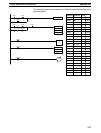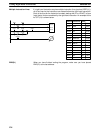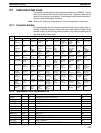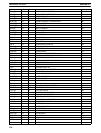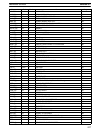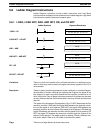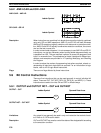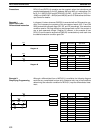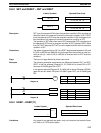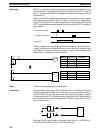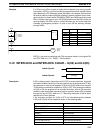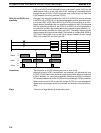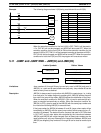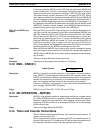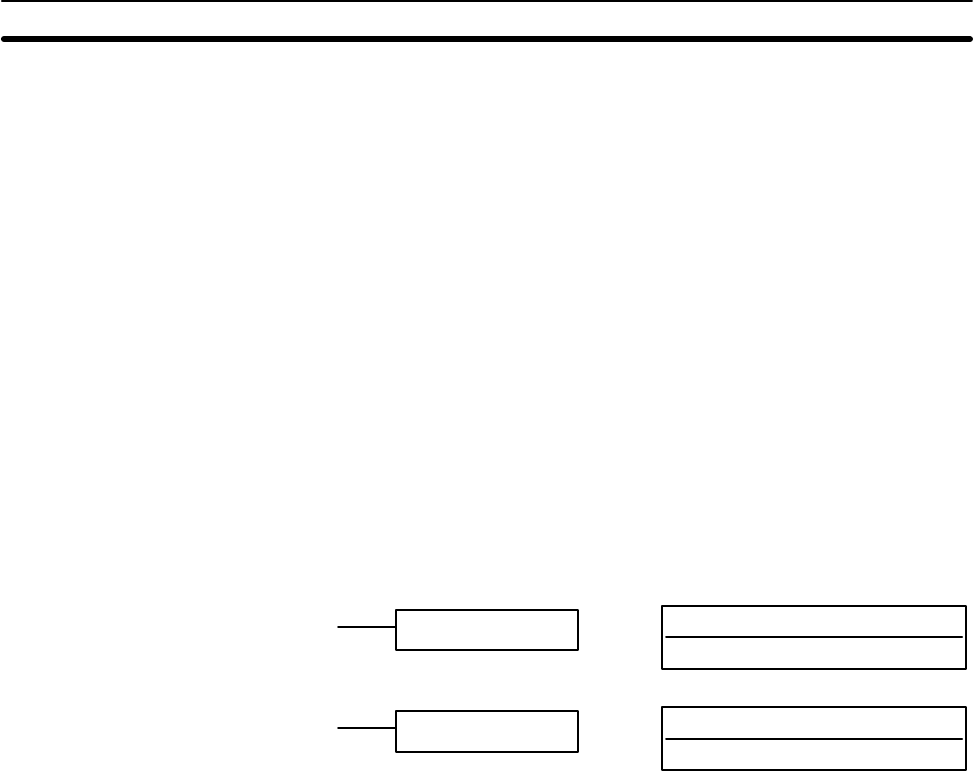
131
OUT turns ON the designated bit for an ON execution condition, and turns OFF
the designated bit for an OFF execution condition. With a TR bit, OUT appears at
a branching point rather than at the end of an instruction line. Refer to
4-7-7
Branching Instruction Lines
for details.
OUT NOT turns ON the designated bit for a OFF execution condition, and turns
OFF the designated bit for an ON execution condition.
OUT and OUT NOT can be used to control execution by turning ON and OFF bits
that are assigned to conditions on the ladder diagram, thus determining execu-
tion conditions for other instructions. This is particularly helpful and allows a
complex set of conditions to be used to control the status of a single work bit, and
then that work bit can be used to control other instructions.
The length of time that a bit is ON or OFF can be controlled by combining the
OUT or OUT NOT with TIM. Refer to Examples under
5-14-1 TIMER – TIM
for
details.
Flags There are no flags affected by these instructions.
5-9-2 DIFFERENTIATE UP and DOWN – DIFU(13) and DIFD(14)
B: Bit
IR, AR, HR, LR
Ladder Symbols Operand Data Areas
DIFU(13) B
B: Bit
IR, AR, HR, LR
DIFD(14) B
Limitations Any output bit can generally be used in only one instruction that controls its sta-
tus. Refer to
3-3 IR Area
for details.
Description DIFU(13) and DIFD(14) are used to turn the designated bit ON for one cycle
only.
Whenever executed, DIFU(13) compares its current execution with the previous
execution condition. If the previous execution condition was OFF and the cur-
rent one is ON, DIFU(13) will turn ON the designated bit. If the previous execu-
tion condition was ON and the current execution condition is either ON or OFF,
DIFU(13) will either turn the designated bit OFF or leave it OFF (i.e., if the desig-
nated bit is already OFF). The designated bit will thus never be ON for longer
than one cycle, assuming it is executed each cycle (see
Precautions
, below).
Whenever executed, DIFD(14) compares its current execution with the previous
execution condition. If the previous execution condition was ON and the current
one is OFF, DIFD(14) will turn ON the designated bit. If the previous execution
condition was OFF and the current execution condition is either ON or OFF,
DIFD(14) will either turn the designated bit OFF or leave it OFF. The designated
bit will thus never be ON for longer than one cycle, assuming it is executed each
cycle (see
Precautions
, below).
These instructions are used when differentiated instructions (i.e., those prefixed
with an @) are not available and single-cycle execution of a particular instruction
is desired. They can also be used with non-differentiated forms of instructions
that have differentiated forms when their use will simplify programming. Exam-
ples of these are shown below.
Flags There are no flags affected by these instructions.
Bit Control Instructions Section 5-9



